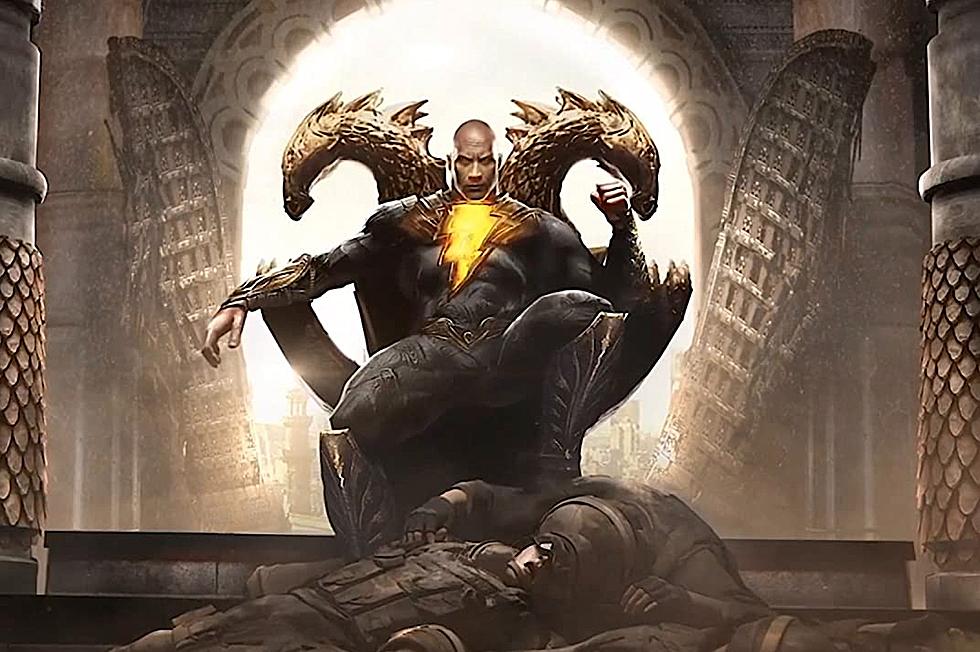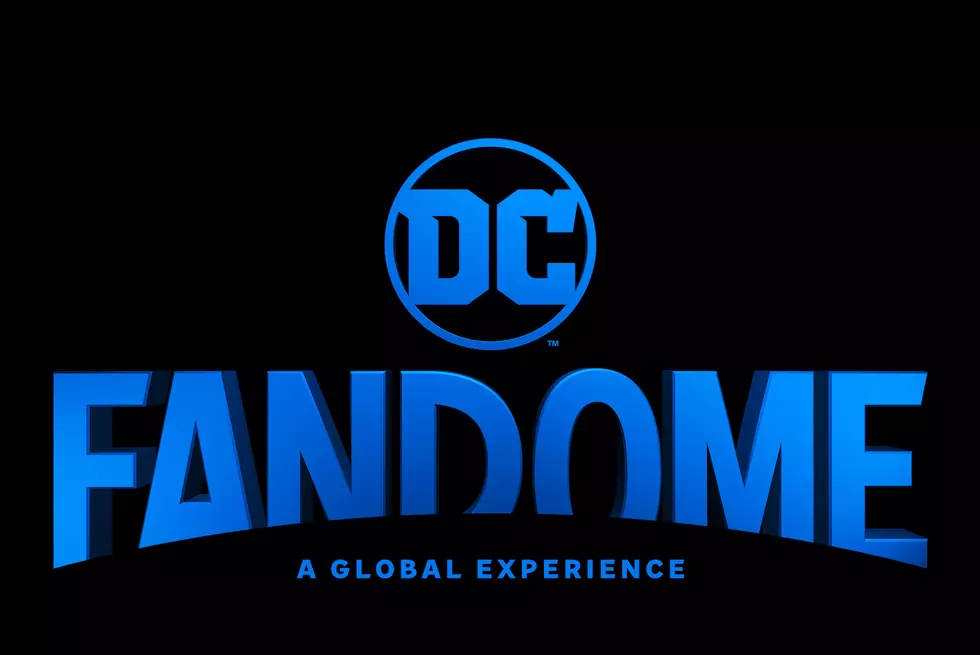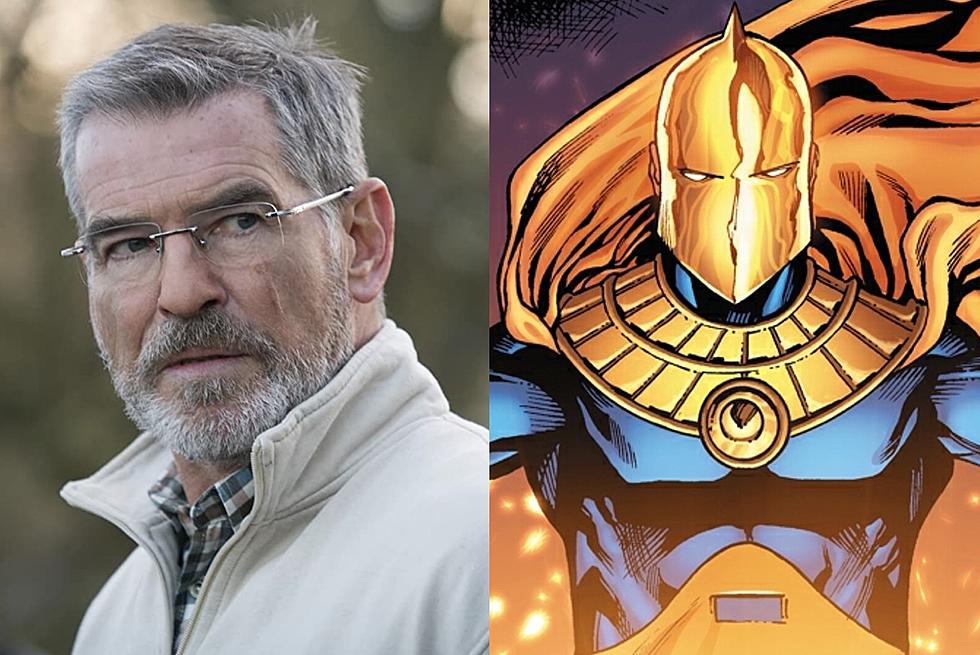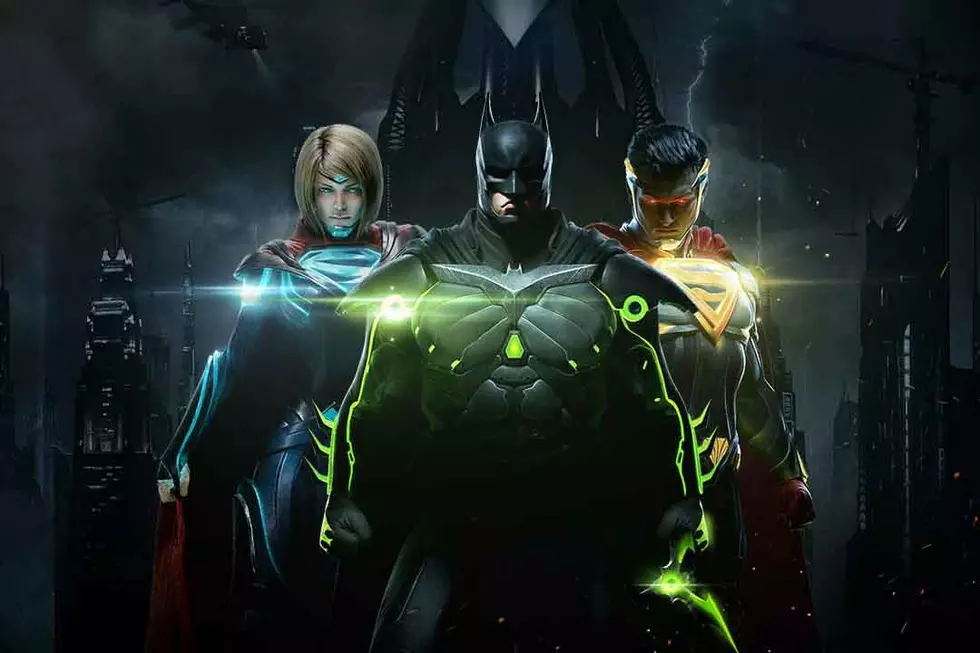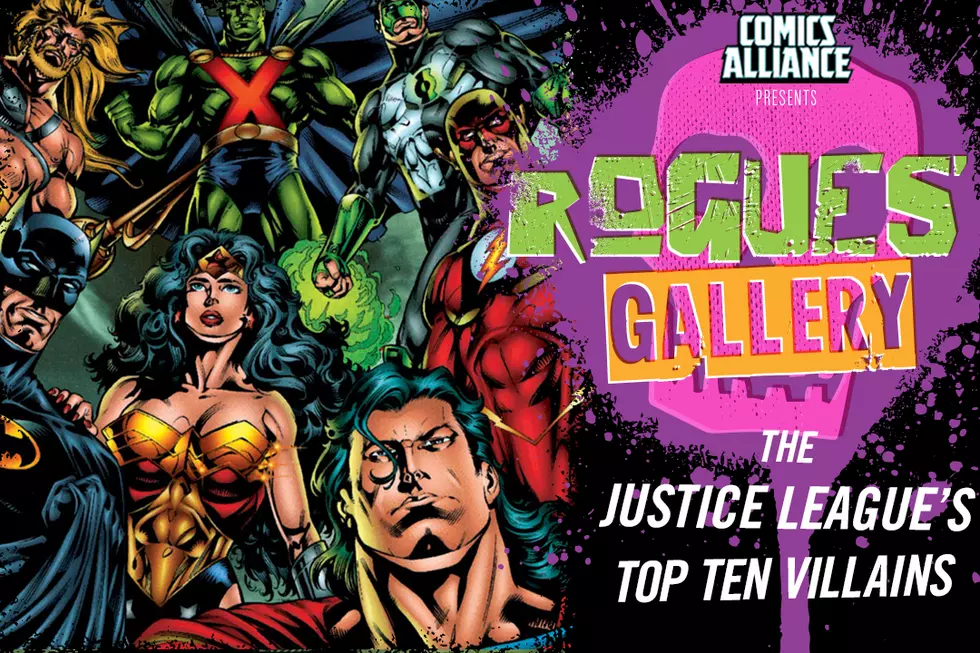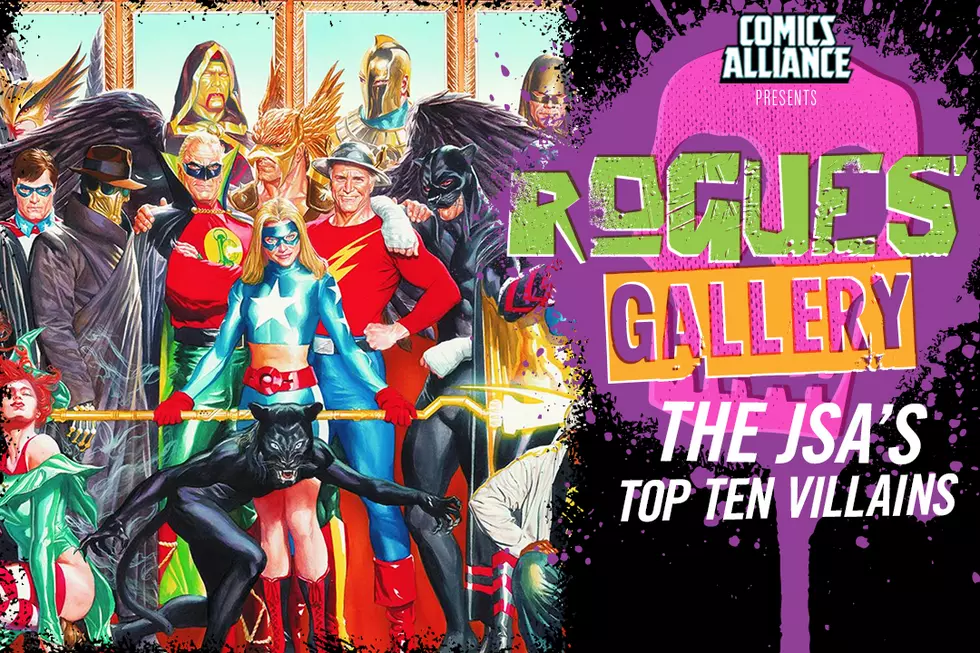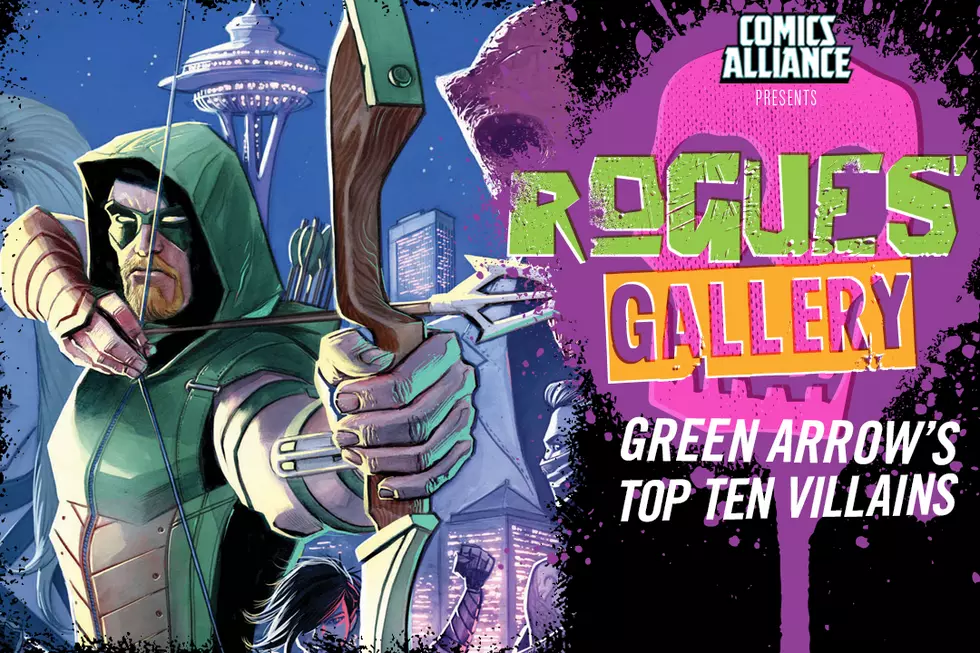
Ask Chris #261: Evil Opposites
Q: What do you think are the ingredients of a successful evil-opposite type villain? -- @Rheiret
A: If you've been reading the things I write about comics for a while, then you probably already know that on the list of plot elements that I'm a complete sucker for, Evil Opposites are right near the top. I love 'em almost every time they show up, and one of the big reasons why is that there actually aren't a whole lot of ingredients. They're one of the simplest concepts to introduce, sometimes to the point of just straight up flipping around the colors on the good guy's outfit and then having them declare loudly and often that they really, really hate the hero.
It's that simple, and when it's done right, it can also be one of the most effective ways to introduce a long-running arch-nemesis.
See, the great thing about the Evil Opposite is that it's one of those concepts that pretty much always works. It's one of the oldest chestnuts in fiction, but one of the things that really makes a great villain is that they reflect an aspect of the hero in a way that can highlight and reveal something about both characters. It's why Batman's rogues gallery is full of people whose traumas are built to mirror his own, from Two-Face's struggle with the different sides of his personality all the way down to Mr. Freeze having his world shattered when he lost his family. And, not coincidentally, that's probably why he has three or four different villains who can lay claim to the title of Evil Opposite, but I'll get back to that in a second.
At the same time, it's an idea that often feels weirdly dated. One of the easiest ways to tell a story that gives a distinctly Modern Age character the feel of a Silver Age story is to throw them against a villain with a name like, say, Professor Raptor, The Reverse Darkhawk, or, I don't know, Boyd Helton, the Anti-Hellboy!
Please note that I am old, and that my definition of "Modern Age" still includes comics created twenty-five years ago.
That said, I don't really think that's the fault of the idea itself as much as it's one of the easiest jumps to make when you're writing a superhero story, with most of the major superheroes getting there a while back. And really, it's surprising that they didn't get there sooner than they did.
I was talking this over with ComicsAlliance contributor Benito Cereno, and we were trying to figure out who the first real Evil Opposite supervillain was, and it was pretty surprising to realize that most of the major ones didn't show up until the '50s. Bizarro, for instance, is probably the genre's most famous take on the concept, and he didn't show up until 1958, a full 20 years into Superman being a going concern, and while "An Evil Version Of Batman" is literally the first thing that comes to mind when you start thinking up bad guys, Killer Moth didn't get there 'til 1951.
The one that we came up with as the first major example of the concept was 1942's Ibac, an Evil Opposite for Captain Marvel:
But even though he says a magic word that transforms him from a scrawny crook into a massive powerhouse, and even though his magic word gives him the power of four of history's greatest villains, rather than the gods and heroes that power Billy Batson --- about as clear an example of an Evil Opposite as you're likely to find --- there was something about him that just didn't fit for me.
That's when I realized what Ibac's missing, and what the first necessary ingredient for an Evil Opposite really has to be: A visual component.
It's the counterpoint to the idea of superheroes needing "iconic costumes." Comic books are built on visual shorthand, from capes to speed lines, and to really sell the idea of the evil opposite, there has to be something there to connect them on that visual level. That connection, and more importantly, that opposition has to be instantly recognizable.
I mentioned above that just flipping around the colors is one of the easiest things in the world to do, but the truth is that it works, because it provides that instant visual connection that the reader needs to identify the character.
And that's only one of several ways that you can build that connection in a way that works. Bizarro's mirrored S-shield is just as identifiable as his craggy face, and Venom is literally wearing Spider-Man's old clothes --- and did the whole color-scheme flip when he became Anti-Venom, just for good measure. And, in one of my all-time favorite examples, we have the Wrath from "The Player On The Other Side," a child whose criminal parents were gunned down by cops on the same day as Bruce Wayne's mom and dad were murdered, and whose costume as a criminal mastermind involves a giant W right on his face that just so happens to look like bat ears.
It's why Black Adam feels like more of an Evil Opposite for Shazam, even though he was originally intended as a one-shot villain and doesn't quite have the true Evil Opposite hook to his powers as Ibac. He's got the visual connection --- he looks like he should be the one fighting Captain Marvel all the time, while Ibac is just some dude with no shirt on.
But Black Adam doesn't just bring the outfit to the table, he's also got another element working in his favor. It's that second ingredient, something that might not be quite as necessary as the visual component, but something that, again, almost always works because of how simple it is: He has all the same powers, he's just a bad guy. It's the easiest trick in the world, but it's effective, if only because regular readers already know what a good guy does with those powers. Using them for evil is instant drama, especially when you bring them into conflict.
It's why Man-Bat, despite the name, isn't really an Evil Opposite for Batman and is instead just a walking (flying) bit of wordplay. And it's one of the reasons I loved Prometheus in Morrison and Porter's JLA, because he took that concept to its hilariously literal extreme of the many Evil Batmen:
Literally using Batman's own fighting style to beat Batman is some A+ kung fu movie stuff, but actually downloading the moves themselves into his head (via CD-ROM!!) is delightful. Plus, while it's not quite as obvious as it was with the Wrath (with whom he shares an origin story), Porter does a lot to visually connect the two characters. The shape of Prometheus's helmet suggests Batman's --- and the knight-style visor is a neat little reminder that he's meant to be a counterpoint to our own dark knight --- and the shoulderpads and gauntlets make for interesting counterpoints to the way Porter gives Batman those pointy shoulders.
Also, while "Prometheus Unbound" predates "Tower of Babel" by a good couple of years, it's also worth noting that he rolls up into the Watchtower with plans for neutralizing each of the Justice Leaguers individually, the same way Batman's contingency plans would later be used against them --- and that his plan for beating Batman was to just be more Batman. It is, I think we can all agree, a solid plan.
Incidentally, if you want to pop it out of the superhero genre and the comic book medium, that's also one of the things I really appreciated about the BBC's Sherlock. Whatever its other flaws might be, its take on Moriarty as not just a criminal mastermind but someone who performed the same role for crooks that Holmes did for the cops, the "Consulting Criminal" bit, was really engaging. I don't think I've ever seen it done that explicitly anywhere else.
Anyway, that's really all you need to make it work: The visual connection and a way to connect the two characters on an even playing field are the things that make them really work, but everything else is already there. Stories of mirror universes and Evil Opposites are inherently interesting as a concept, and it takes a whole lot of work to screw that one up.
Ask Chris art by Erica Henderson. If you’ve got a question you’d like to see Chris tackle in a future column, just send it to @theisb on Twitter with the hashtag #AskChris.
More From ComicsAlliance
